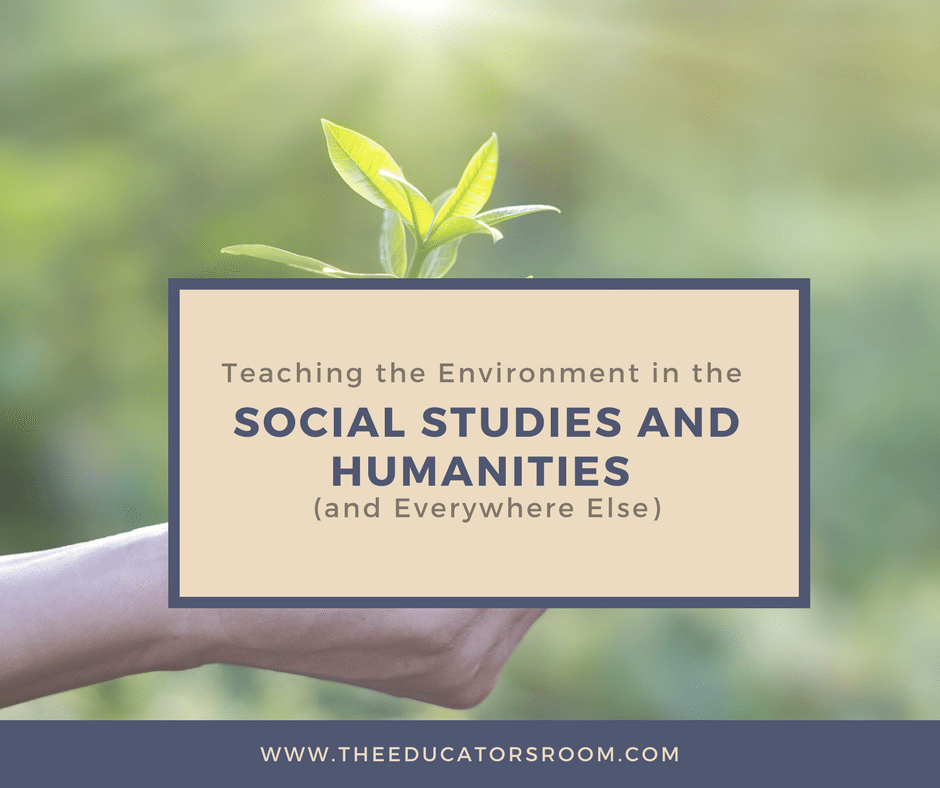When we get close to the end of the year I like to leave my students with a bit of reflection for the future. In a matter-of-fact and “non-preachy” way, I tell them that the most crucial issue that their generation will inherit is the environment. In fact, despite what students hear from many political leaders, their generation may very well have to save it.
This urgency puts teachers on alert and motivates us to take up the challenge to address these issues. One of the most oft-repeated phrases coming out of education circles in the last decade is that “we are preparing students for jobs (and the world!) that do not yet exist.” A daunting challenge, especially when we see the onset of greater environmental crises all around us.
Science classrooms are the obvious place for this education to begin. With climate change debunkers all around us – including in the highest offices of government – ignoring the vast evidence of the scientific community, students need a clear understanding of the science behind global warming, deforestation, and the plethora of other serious issues facing the world. But to round out the picture of the impact of environmental crises for students, other disciplines are increasingly including environmental studies into their curriculum.
[bctt tweet=”Students need a clear understanding of the science behind global warming, deforestation, and the plethora of other serious issues facing the world.” username=””]
The Mathematical Association of America, noting that national and regional “education standards advocate developing students’ quantitative reasoning skills through analysis of data,” have created classroom-ready data sets in Environmental Math. There are a ton of online sources for environmentally friendly math lessons. Beyond Benign has a variety of green math, engineering, and technology lesson ideas for high schools. According to the site, most are geared toward pre-algebra and Algebra I and II, but can be modified for higher-level math and statistics courses. Many of the ideas also make a natural fit for math and science teacher collaboration.
Education about the environment is not restricted to the math and sciences. More and more humanities departments are getting in on the action. Literature departments in universities across the country are developing programs in Environmental Humanities. This movement will naturally trickle down to K-12 levels as educators take on programs of eco-literacy. Connecticut schools, through Connecticut Energy Education developed reading lists for high schools that wanted suggestions for fiction readings on environmental concerns that could be used for both science and literature classes. The Association for the Study of Literature and Environment (ASLE), formed in 1992 by writers and scholars, promotes “ecocritical” teaching in scholarship in the humanities, but also tries to foster cross-curricular cooperation. The site has numerous links to resources, courses and sample syllabi.
Not to be left behind, the social studies are also a great place to look at the complicated dimensions of environmental studies on a governmental, social and historical level. Going back to my end-of-year comments to students, my last unit in my U. S. History and Economics classes are on the environment. In U. S. History we look at the roots of the environmental movement in the 1960s and 70s and how it has continuously evolved as an important social movement in American culture. This naturally leads to discussions on government policy, going back to the Progressive era at the turn of the twentieth century, and how environmental policy has grown, contracted, and been a major source of political controversy. In economics, we can expand on these policy issues in countless ways. Besides looking at national and global economic agreements, this is also a great place to look at environmental policy and energy use on a local level. Every state is dealing with some type of initiative – or battling one – to deal with an environmental or energy issue; from solar power in Indianapolis, IN to wind farms in Roscoe, TX. The Center for Ecoliteracy has some terrific programs for younger students on creating awareness for sustainable living.
Our use of the Earth’s resources and its impact on our environment, and our future is an issue that our young people will directly confront. They will deal with it not only in terms of the necessary scientific and technological changes that will need to occur but also in how we think, behave and act politically with the environment. As educators, we must promote this ecoliteracy in all fields to help them, and ourselves, prepare for this future.







